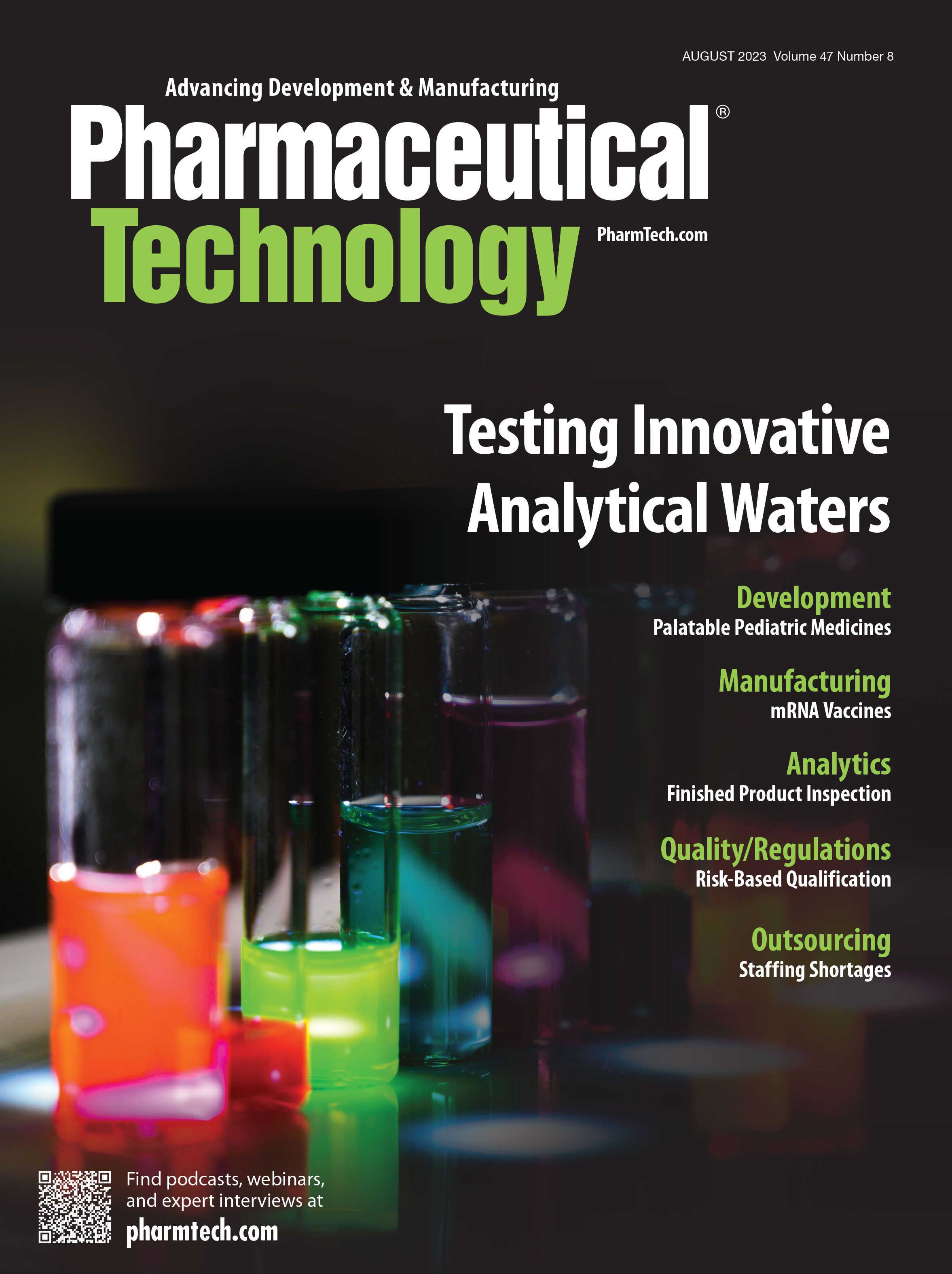Editor’s Note: This article was published in Pharmaceutical Technology Europe’s August 2023 print issue.
Ensuring OSD Quality and Safety
Current good manufacturing practices for oral solid dosage forms protect the product from contamination and potential errors.
shidlovski – Stock.adobe.com

Oral solid dosage (OSD) forms are commonplace within the pharmaceutical industry thanks to several advantages such a form can offer, including convenience of manufacture, ease of administration, and cost-effectiveness. According to market research, the OSD market outlook is favourable and expected to experience continued growth, driven by the low production cost—particularly within developing nations (1).
The manufacture of all pharmaceutical finished dosage forms, including OSD, must adhere to regulatory guidance and specifications to ensure quality and safety of the products are maximized. Current good manufacturing practices (CGMPs), for example, are the minimum standards that must be met and require a proactive quality approach be taken to the manufacture of finished products so that any risks, such as contamination, are minimized or eliminated (2).
CGMP requirements tend to be general and allow for manufacturers to implement quality controls on an individual basis. “The general expectations for CGMP, relating to OSD forms, revolve around ensuring consistent and acceptable product quality and safety,” confirms Dave DiProspero, senior fellow, Pharmaceutical Process, CRB. “This [practice] follows the traditional five Ps of GMP: people, premises, processes, products, and procedures. Regulatory guidance and good practices are based on these five Ps and focus on protecting the product from contamination and preventing any mix ups. Operations must be fully understood and in control.”
Relatively current for some time
OSD regulatory guidance has been relatively current for many years, explains DiProspero, which is contrary to other areas of manufacturing, such as the sterile environment, where recent updates have been made via documents like Annex 1. “The US Food and Drug Administration (FDA) has issued various technical guidance documents [for OSD forms], most recently around continuous manufacturing; however, the most typical industry guidance is related to ISPE [International Society for Pharmaceutical Engineering Operations] OSD Baseline Guide Volume 2 and ISPE Good Practice Guide Continuous Manufacturing of OSD Forms” (3,4).
Within Europe, the European Medicines Agency’s (EMA’s) Committee for Medicinal Products for Human Use (CHMP) adopted updated manufacturing guidelines for finished dosage forms in 2017 (5). These updated guidelines addressed legislative requirements and followed the format of the common technical document (CTD) module 3 dossier. Additionally, the changes to manufacturing practices as related to the global, complex supply chains were reflected.
Although no major changes are expected to be made to GMP guidance for OSDs in the near future, DiProspero does point out that regulators are focusing more heavily on manufacturers of nutraceuticals and dietary supplements. “More guidance and closer alignment with [prescription] products are likely to occur in the years ahead,” he says. “Many of the major dietary supplement manufacturers are already greatly improving their facilities and processes to align with pharma facilities.”
Regulating innovative approaches
“Continuous manufacturing has been the leading new processing platform paving its way in the development of new OSD products and conversion from traditional batch products,” notes DiProspero. It is known that regulatory authorities around the world have proactively supported the use of innovative manufacturing approaches, such as continuous manufacturing (6). “FDA have reacted very positively and strongly in advocating this platform and providing guidance on its use and implementation,” DiProspero confirms.
Recently, there has been greater harmonization around the regulation of continuous manufacturing, DiProspero continues. “The 2022 ISPE Continuous Manufacturing Good Practice Guide was heavily based on establishing a set of minimum equipment requirements for each type of system to function as a part of an integrated process train, making it easier for manufacturers and equipment suppliers to identify and define minimum attributes,” he says. “The March 2023 FDA guidance for industry (Q13 Continuous Manufacturing of Drug Substances and Drug Products) describes scientific and regulatory considerations for the development, implementation, operation, and lifecycle management of continuous manufacturing” (7).
“[Further,] FDA’s guidance builds on existing International Council for Harmonisation (ICH) quality guidance (Q13), providing clarification on continuous manufacturing concepts and describing scientific approaches and regulatory considerations specific to continuous manufacturing of drug substances and drug products,” DiProspero adds (8).
Ensuring compliance and quality in modern practices
Currently, to ensure compliance and improved quality of modern finished products, companies are working on improved process containment and closed or integrated systems, DiProspero highlights. “It has always been common to contain and close when dealing with hazardous/potent compounds, but [there are now] improved systems and operations for non-potent and non-hazardous,” he remarks. “Minimizing dust, controlling feed, and improving ergonomics and operator safety are among some of the most common best practices being seen in modern powder handling and OSD manufacturing operations.”
References
1. Fact.MR. Oral Solid Dosage Pharmaceutical Market. Market Report, July 2022.
2. ISPE. What is GMP? ISPE.org (accessed 26 July 2023).
3. ISPE. Baseline Guide Vol. 2: Oral Solid Dosage Forms 3rd Edition. Guidance Document, November 2016.
4. ISPE. Good Manufacturing Practice Guide: Continuous Manufacturing of Oral Solid Dosage Forms. Guidance Document, March 2022.
5. EMA. Guideline on Manufacture of the Finished Dosage Form. Guidance Document, July 2017.
6. Wahlich, J. Review: Continuous Manufacturing of Small Molecule Solid Oral Dosage Forms. Pharmaceutics, 2021, 13 (8), 1311.
7. FDA. Q13 Continuous Manufacturing of Drug Substances and Drug Products. Guidance for Industry, March 2023.
8. ICH. Q13, Continuous Manufacturing of Drug Substances and Drug Products (ICH, 16 Nov. 2022).
About the author
Felicity Thomas is the European/senior editor for Pharmaceutical Technology Group.
Article details
Pharmaceutical Technology Europe
Vol. 35, No. 8
August 2023
Pages: 32–33
Citation
When referring to this article, please cite it as Thomas, F. Ensuring OSD Quality and Safety. Pharmaceutical Technology Europe 2023 35 (8) 32–33.
